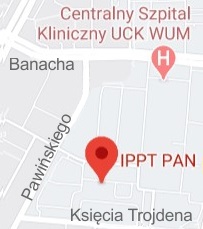| 1. |
Fathalian M., Darban H., Postek E. W., Atomistic insights into tensile damage of functionally Graded Al-SiC composites,
International Journal of Mechanical Sciences, ISSN: 0020-7403, DOI: 10.1016/j.ijmecsci.2025.110012, Vol.288, pp.110012-1-110012-16, 2025 Abstract:
The tensile behavior and damage mechanisms of functionally graded (FG) Al-SiC composites are systematically investigated using molecular dynamics (MD) simulations. A comprehensive set of large-scale MD simulations is conducted on FG composites composed of three layers reinforced with different volume fractions of randomly distributed three-dimensional SiC particles. This work introduces a novel approach by modeling the reinforcement ceramic as three-dimensional particles, thereby more accurately representing the FG composite microstructure. Predictions of the model for Young's moduli of composites align with experimental data from the literature. The yield and ultimate tensile strength are overestimated due to the high applied strain rates and idealized crystal structures used in the simulations, which lack common defects such as vacancies and dislocations. The model is utilized to study the influence of reinforcement particle shape, size, orientation, and distribution on the tensile and damage behavior of composites. The FG composites reinforced with cubic particles demonstrate lower yield and tensile strength than those with spherical particles, primarily due to the high-stress concentrations around the corners of the cubic reinforcements. Reducing the size of SiC particles enhances the elastic modulus, yield, and tensile strength of the FG composites. It is shown that the stiffness of the FG composites reinforced with rectangular prisms can be effectively tailored by changing the orientation of the reinforcements. When SiC rectangular prisms are aligned along the tensile direction, the resulting FG composites exhibit higher yield and tensile strength. This work offers fundamental atomistic insights that help design FG composites with better mechanical performance. Affiliations:
| Fathalian M. | - | IPPT PAN | | Darban H. | - | IPPT PAN | | Postek E. W. | - | IPPT PAN |
|  |
| 2. |
Fathalian M., Postek E. W., Tahani M., Sadowski T.♦, Effect of Diffusion on the Ultimate Axial Load of Complex-Shaped Al-SiC Samples: A Molecular Dynamics Study,
Molecules, ISSN: 1420-3049, DOI: 10.3390/molecules29143343, Vol.29, No.14, pp.3343-1-3343-20, 2024 Abstract:
Metal matrix composites (MMCs) combine metal with ceramic reinforcement, offering high strength, stiffness, corrosion resistance, and low weight for diverse applications. Al-SiC, a common MMC, consists of an aluminum matrix reinforced with silicon carbide, making it ideal for the aerospace and automotive industries. In this work, molecular dynamics simulations are performed to investigate the mechanical properties of the complex-shaped models of Al-SiC. Three different volume fractions of SiC particles, precisely 10%, 15%, and 25%, are investigated in a composite under uniaxial tensile loading. The tensile behavior of Al-SiC composites is evaluated under two loading directions, considering both cases with and without diffusion effects. The results show that diffusion increases the ultimate tensile strength of the Al-SiC composite, particularly for the 15% SiC volume fraction. Regarding the shape of the SiC particles considered in this research, the strength of the composite varies in different directions. Specifically, the ultimate strength of the Al-SiC composite with 25% SiC reached 11.29 GPa in one direction, and 6.63 GPa in another, demonstrating the material’s anisotropic mechanical behavior when diffusion effects are considered. Young’s modulus shows negligible change in the presence of diffusion. Furthermore, diffusion improves toughness in Al-SiC composites, resulting in higher values compared to those without diffusion, as evidenced by the 25% SiC volume fraction composite (2.086 GPa) versus 15% (0.863 GPa) and 10% (1.296 GPa) SiC volume fractions. Keywords:
Molecular dynamics, Al-SiC composites, Diffusion, SiC particle Affiliations:
| Fathalian M. | - | IPPT PAN | | Postek E. W. | - | IPPT PAN | | Tahani M. | - | IPPT PAN | | Sadowski T. | - | Lublin University of Technology (PL) |
|  |
| 3. |
Fathalian M., Postek E. W., Tahani M., Sadowski T.♦, A Comprehensive Study of Al2O3 Mechanical Behavior Using Density Functional Theory and Molecular Dynamics,
Molecules, ISSN: 1420-3049, DOI: 10.3390/molecules29051165, Vol.29, pp.1165-1165-18, 2024 Abstract:
This study comprehensively investigates Al2O3’s mechanical properties, focusing on fracture toughness, surface energy, Young’s modulus, and crack propagation. The density functional
theory (DFT) is employed to model the vacancies in Al2O3, providing essential insights into this material’s structural stability and defect formation. The DFT simulations reveal a deep understanding of vacancy-related properties and their impact on mechanical behavior. In conjunction with molecular dynamics (MD) simulations, the fracture toughness and crack propagation in Al2O3 are explored, offering valuable information on material strength and durability. The surface energy of Al2O3 is also assessed using DFT, shedding light on its interactions with the surrounding environment.
The results of this investigation highlight the significant impact of oxygen vacancies on mechanical characteristics such as ultimate strength and fracture toughness, drawing comparisons with the effects observed in the presence of aluminum vacancies. Additionally, the research underscores the validation of fracture toughness outcomes derived from both DFT and MD simulations, which align well with findings from established experimental studies. Additionally, the research underscores the validation of fracture toughness outcomes derived from DFT and MD simulations, aligning well with findings from established experimental studies. The combination of DFT and MD simulations provides a robust framework for a comprehensive understanding of Al2O3’s mechanical properties, with implications for material science and engineering applications. Keywords:
Al2O3, fracture toughness, density functional theory, molecular dynamics Affiliations:
| Fathalian M. | - | IPPT PAN | | Postek E. W. | - | IPPT PAN | | Tahani M. | - | IPPT PAN | | Sadowski T. | - | Lublin University of Technology (PL) |
|  |
| 4. |
Hamed Mashhadzadeh A.♦, Fathalian M., Ghorbanzadeh Ahangari M.♦, Shahavi H.♦, DFT study of Ni, Cu, Cd and Ag heavy metal atom adsorption onto the surface of the zinc-oxide nanotube and zinc-oxide graphene-like structure,
MATERIALS CHEMISTRY AND PHYSICS, ISSN: 0254-0584, DOI: 10.1016/j.matchemphys.2018.09.016, pp.366-373, 2024 Abstract:
Abstract
In the current article, we investigated adsorption properties of Nickel (Ni), Copper (Cu), Cadmium (Cd) and silver (Ag) heavy metal atoms with zinc oxide (ZnO) nanotube and ZnO-graphene like structures sheet using Ab-initio based density functional theory (DFT) calculations. At first, both nanostructures were optimized and then most stable configuration, adsorption energy and equilibrium distance of each heavy metal with nanostructures were computed via DFT and the results were compared with each other. Our obtained results reveal that ZnO-nanotube had a better adsorbing behavior comparing to ZnO-graphene sheet case by case due to lower equilibrium distance and higher adsorption energy. This nanostructure created a strong binding with Ni, Cu and Ag but adsorption energy for Cd was clearly lower than others. Also, only Ni and Cu could have a chemisorption adsorption with the ZnO-graphene sheet and others showed a nearly weak physisorption adsorption with this nanostructure. The maximum adsorption energy for both ZnO-nanostructures occurred for nickel which were about −3.45 eV and −2.19 eV respectively. The minimum adsorption energy for ZnO nanotube occurred with Cd (−1.3 eV) while for ZnO-graphene sheet it occurred with Zn (−0.15 eV). In almost all items equilibrium distance decreased with increasing in adsorption energy. Moreover, we generated density of state (DOS) diagrams to investigate the electrical properties of studied structures. Keywords:
Zinc-oxideDFT dsorption Heavy metal atoms DOS Affiliations:
| Hamed Mashhadzadeh A. | - | other affiliation | | Fathalian M. | - | IPPT PAN | | Ghorbanzadeh Ahangari M. | - | other affiliation | | Shahavi H. | - | other affiliation |
|  |
| 5. |
Fathalian M., Postek E.W., Sadowski T.♦, Mechanical and Electronic Properties of Al(111)/6H-SiC Interfaces: A DFT Study,
Molecules, ISSN: 1420-3049, DOI: 10.3390/molecules28114345, Vol.28, No.11, pp.4345-1-19, 2023 Abstract:
A density functional theory (DFT) calculation is carried out in this work to investigate the effect of vacancies on the behavior of Al(111)/6H SiC composites. Generally, DFT simulations with appropriate interface models can be an acceptable alternative to experimental methods. We developed two modes for Al/SiC superlattices: C-terminated and Si-terminated interface configurations. C and Si vacancies reduce interfacial adhesion near the interface, while Al vacancies have little effect. Supercells are stretched vertically along the z-direction to obtain tensile strength. Stress–strain diagrams illustrate that the tensile properties of the composite can be improved by the presence of a vacancy, particularly on the SiC side, compared to a composite without a vacancy. Determining the interfacial fracture toughness plays a pivotal role in evaluating the resistance of materials to failure. The fracture toughness of Al/SiC is calculated using the first principal calculations in this paper. Young’s modulus and dominant surface energy are calculated to obtain the fracture toughness. Young’s modulus is higher for C-terminated configurations than for Si-terminated configurations. Surface energy plays a dominant role in determining the fracture toughness process. Finally, to better understand the electronic properties of this system, the density of states (DOS) is calculated. Keywords:
DFT,interface,surface energy,young’s modulus,fracture toughness Affiliations:
| Fathalian M. | - | IPPT PAN | | Postek E.W. | - | IPPT PAN | | Sadowski T. | - | Lublin University of Technology (PL) |
|  |
| 6. |
A. Hamed M.♦, Ghorbanzadeh Ahangari M.♦, Dadrasi A.♦, Fathalian M.♦, Theoretical studies on the mechanical and electronic properties of 2D and 3D structures of Beryllium-Oxide graphene and graphene nanobud,
APPLIED SURFACE SCIENCE, ISSN: 0169-4332, DOI: 10.1016/j.apsusc.2019.01.083, pp.https://doi.org/10.1016/j.apsusc.2019.01.083-https://doi.org/10.1016/j.apsusc.2019.01.083, 2019 Abstract:
Abstract
In the present study, ab initio-based density functional theory (DFT) calculations were used to determine the effects of certain phenomena that can occur in the synthesis of Beryllium-Oxide (BeO) few-layer sheets, such as various types of defects, attaching nanocages onto the surface of graphene and attaching layers to each side of it on the mechanical and electronic properties of BeO graphene sheets. We also used the density of states (DOS) calculations to obtain a better understanding of the electronic properties of the studied nanostructures. In the first step, we calculated Young’s modulus for the pristine BeO graphene sheet that was found to be equal to 1.110 TPa. Next, the effect of small and large defects on the mechanical properties of the BeO graphene-like structure was examined, and we found that extracting one Be atom resulted in a lower Young’s modulus compared to that obtained after extracting one oxygen atom (1.087 TPa versus 1.104 TPa), demonstrating that Be had a greater effect on the stability and mechanical strength of BeO graphene than did oxygen. The same trend was found when comparing three atom vacancies with two missing Be atoms to those with two missing oxygen atoms. Furthermore, the effect of circular and rectangular shape defects was investigated, and the obtained results demonstrated that the increase in the diameter of defects with both shapes significantly decreased Young’s modulus and band gap energy values. Additionally, due to the number of detached atoms in shape defects which are more than those of small defects, this type of defect had a more destructive effect on the structure’s stability so that it decreased the Young’s modulus more than small defects. Moreover, the mechanical properties of the BeO graphene nanobud structure were determined in terms of placing different numbers of Be12O12 nanocages onto the graphene surface, and a similar decreasing trend was observed for Young’s modulus. Finally, we considered the mechanical properties of the bi- and three-layer BeO graphene-like structures and found that increasing the number of layers reduced Young’s modulus slightly. For both of the latter phenomena of attaching nanocages and layers, the band gap energy decreased. Keywords:
Young’s modulus Affiliations:
| A. Hamed M. | - | other affiliation | | Ghorbanzadeh Ahangari M. | - | other affiliation | | Dadrasi A. | - | other affiliation | | Fathalian M. | - | other affiliation |
|  |
| 7. |
Fathalian M.♦, Ghorbanzadeh Ahangari M.♦, Fereidoon A.♦, Effect of Nanosilica on the Mechanical and Thermal Properties of Carbon Fiber/Polycarbonate Laminates,
Fibers and Polymers, ISSN: 1229-9197, DOI: 10.1007/s12221-019-1158-0, pp.https://doi.org/10.1007/s12221-019-1158-0-https://doi.org/10.1007/s12221-019-1158-0, 2019 Abstract:
An investigation of nanosilica (SiO2), influencing the mechanical and thermal attributes of carbon fiber (CF)/polycarbonate (PC) laminates, is described in this study. Polycarbonates with four different weight percentages of SiO2 (PC-SiO2, 0.1, 0.3, 0.6 and 1.0 wt%) were prepared using a melt-blending technique. The PC-SiO2 nanocomposites were then used to fabricate planar CF/PC laminates through a hot hydraulic press machine. The prepared laminates were characterized by a number of different techniques; namely, tensile tests, dynamic mechanical thermal analysis (DMTA), differential scanning calorimetry (DSC), thermal gravimetric analysis (TGA) and scanning electron microscopy (SEM). The tensile test findings revealed that when 0.6 wt% of SiO2 was added to the laminate layers, the maximum tensile modulus and yield stress were achieved. The mechanical properties obtained by DMTA supported the tensile test results. It should be noted that the 0.6 wt% of SiO2 had the highest mechanical properties. The DMTA and DSC analyses were used to measure the glass transition temperatures (Tg) of laminates. We found that with the addition 0.6 wt% of SiO2 the Tg increased to approximately 1°C compared to 0 °C for the neat CF/PC laminate, meaning that by adding up 0.1 to 0.6 nanosilica to the polymer, the value Tg first increased and then decreased. To characterize the mass loss, the thermal degradation of polycarbonate influenced by nitrogen was investigated through TGA. According to our TGA results, the highest thermal stability was achieved by adding 0.6 wt% of SiO2 to the PC. Keywords:
Polycarbonate,Fiber Carbon,SiO2 Affiliations:
| Fathalian M. | - | other affiliation | | Ghorbanzadeh Ahangari M. | - | other affiliation | | Fereidoon A. | - | other affiliation |
|  |
| 8. |
A. Hamed M.♦, Ghorbanzadeh Ahangari M.♦, Salmankhani A.♦, Fathalian M.♦, Density functional theory study of adsorption properties of non-carbon, carbon and functionalized graphene surfaces towards the zinc and lead atoms,
PHYSICA E-LOW-DIMENSIONAL SYSTEMS & NANOSTRUCTURES, ISSN: 1386-9477, DOI: 10.1016/j.physe.2018.08.010, pp.https://doi.org/10.1016/j.physe.2018.08.010-https://doi.org/10.1016/j.physe.2018.08.010, 2018 Abstract:
Abstract
In the current study, we Investigated the adsorption properties of zinc (Zn) and lead (Pb) atoms on the surface of carbonic and non-carbonic graphene using Density functional theory calculations. The procedure for this research can be divided into two sections. First, we calculated the adsorption value of single zinc and lead atoms with such non-carbonic graphene-like structures as Boron-Nitride (BN), Aluminum-Nitride (AlN), Gallium-Nitride (GaN), Silicon-Carbide (SiC), and Silicene. We found that the silicene was more powerful to detect the stated heavy metal atoms compared with others. The calculated adsorption values between the single zinc and lead atoms with silicene monolayer sheet were equal to −0.90 eV and −3.80 eV, respectively. We also used electron transfer calculations after adsorbing the stated heavy metal atoms and found that the calculated charge transfer was equal to 0.42 and 0.12 electrons for Silicene/Pb and Silicene/Zn complex, respectively. The density of states (DOS) results demonstrated that a strong hybridization could occur between the Pb atom and the silicene graphene. Then, we performed DFT calculations to determine the interaction energy between the mentioned metal atoms with pristine carbonic graphene. We found that the interaction in graphene/Zn (−0.09 eV) and graphene/Pb (−0.45 eV) was so weak, especially for graphene and zinc. To overcome this issue, we first activated the surface of graphene by carboxyl and hydroxide group. The interaction energy values between the zinc and lead atoms with graphene-COOH were approximately −0.18 eV and −1.01 eV, respectively, which showed improvements in the adsorption energy. Then, we approached the mentioned metal atoms on the surface of single bondOH-decorated graphene and demonstrated that the interaction energy between the single zinc and lead atoms with graphene-OH were about −0.78 eV and −3.33 eV. In other words, it improved by 755% and 623% compared with graphene/Zn and graphene/Pb, respectively. The strong adsorption between the hydroxyl group and the stated metals atom caused the OH group to be isolated from the graphene surface and become an individual molecule. Keywords:
DFT ,Adsorption Affiliations:
| A. Hamed M. | - | other affiliation | | Ghorbanzadeh Ahangari M. | - | other affiliation | | Salmankhani A. | - | other affiliation | | Fathalian M. | - | other affiliation |
|  |
| 9. |
Ghorbanzadeh Ahangari M.♦, A. Hamed M.♦, Fathalian M.♦, Rostamiyan Y.♦, Mallahi A.♦, Effect of various defects on mechanical and electronic properties of zinc-oxide graphene-like structure: A DFT study,
VACUUM, ISSN: 0042-207X, DOI: 10.1016/j.vacuum.2019.04.003, pp.Volume 165, July 2019, Pages 26-34-https://doi.org/10.1016/j.vacuum.2019.04.003, 2018 Abstract:
Abstract
In current study ab-initio based density functional theory (DFT) calculations were employed to determine the effect of different types of defect including the point (Stone-Wales (SW) and atom vacancies) and shape defects on mechanical and electronic properties of zinc oxide (ZnO) graphene-like sheet. Also, the density of states calculations (DOS) were done to give a better understanding of the electronic behavior of this structure under applied defects. With this purpose, different defects were applied to the surface of the ZnO graphene-like sheet and Young's modulus was calculated theoretically. Results showed that all applied defects had a negative effect on Young's modulus. SW defect had the lowest effect on Young's modulus among point defects. In terms of vacancy defects, increasing in the number of extracted atoms decreased modulus reversely. We also found from vacancy defects that extracting Zn atom decreased the properties more than extracting oxygen atom. So Zn atom has a higher effect on ZnO graphene-like sheet strength and stability compared to oxygen atom. The lowest obtained Young's modulus occurred in three atom vacancy with two missed Zn atoms. Furthermore, circular and square shape defects with various diameters were created on ZnO graphene-like sheet and Young's modulus was again considered. Affiliations:
| Ghorbanzadeh Ahangari M. | - | other affiliation | | A. Hamed M. | - | other affiliation | | Fathalian M. | - | other affiliation | | Rostamiyan Y. | - | other affiliation | | Mallahi A. | - | other affiliation |
|  |



























